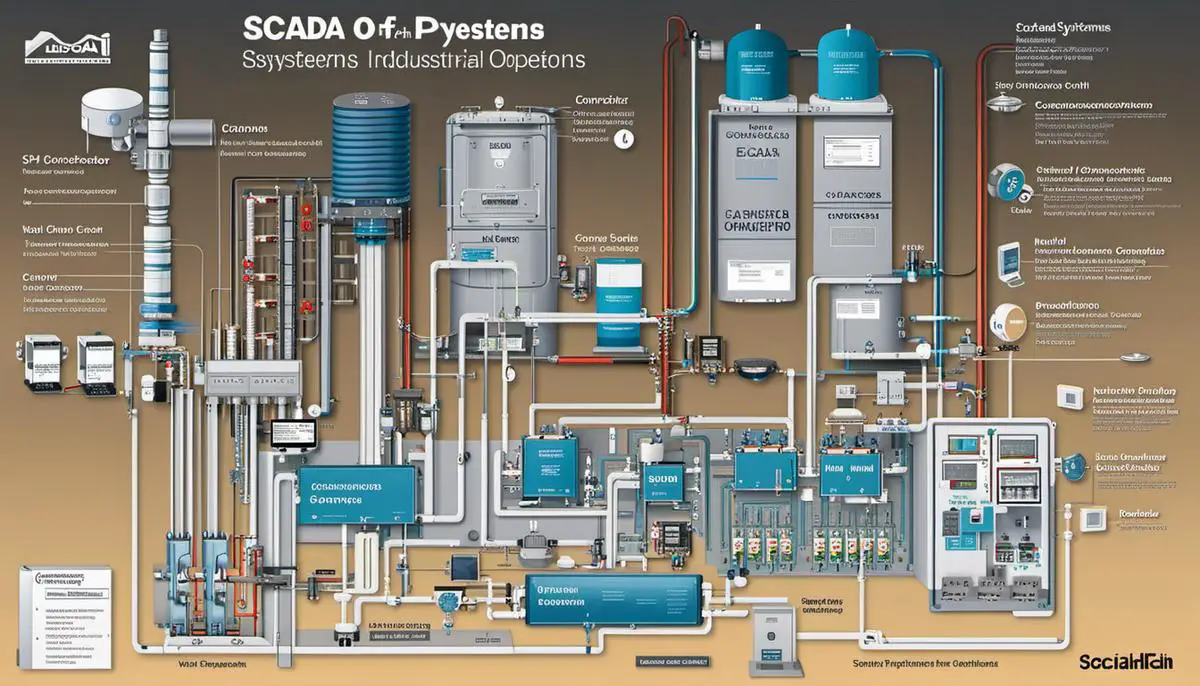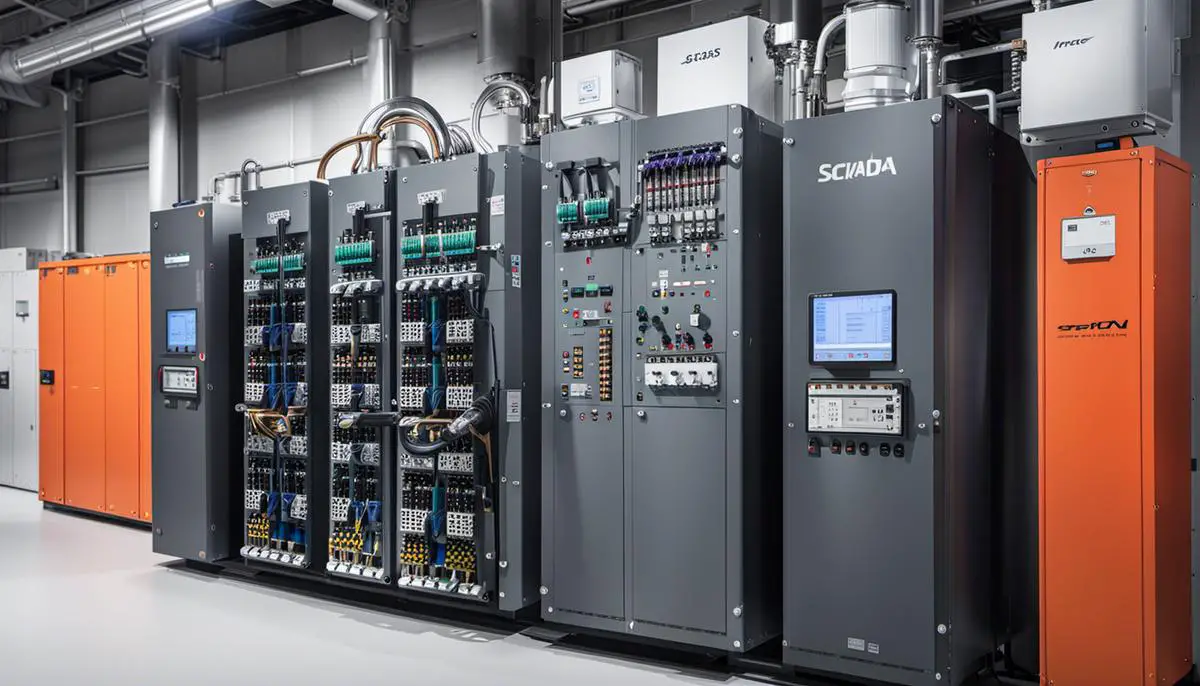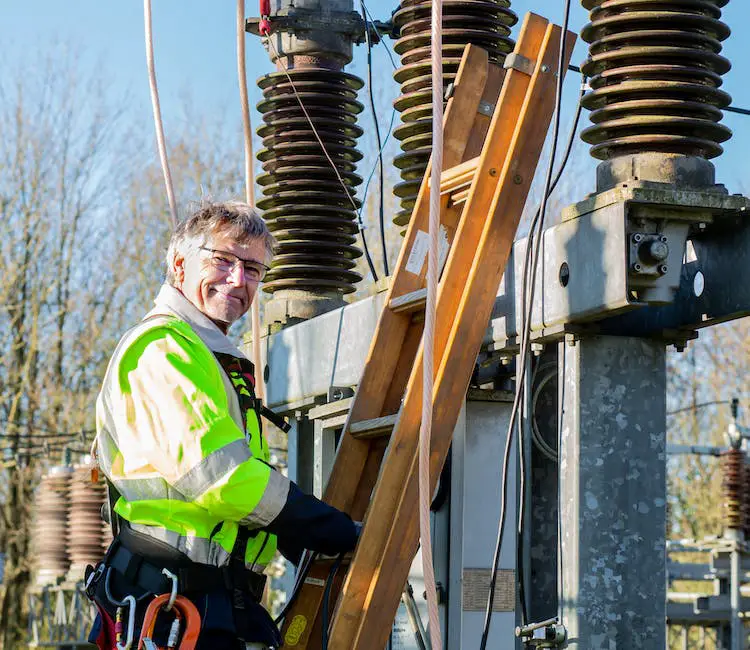Understanding SCADA Systems for Substation Automation: In our rapidly advancing technological world, tools aimed at increasing efficiency, improving safety, and automating mundane processes are constantly being developed and integrated into various industries. In the field of electrical power delivery, one such tool which has seen significant application and development is the Supervisory Control and Data Acquisition (SCADA) system. SCADA is at the forefront of revolutionizing operations, particularly in substation automation, and has been instrumental in enhancing real-time monitoring and control of electrical substations. This exploration into SCADA systems delves into how they function, their role in multiple sectors, and most importantly, their transformative effect on power substation automation.
Overview of SCADA Systems (Understanding SCADA Systems for Substation Automation)
Understanding SCADA Systems
SCADA (Supervisory Control and Data Acquisition) systems are critical for industrial operations as they serve to monitor and control industrial infrastructure or facility-based processes. The SCADA systems are essentially computer systems that collect and analyze real-time data. These systems utilize data communications, graphical user interface, and extended processing capabilities for monitoring and controlling a plant or equipment in industries such as telecommunications, water and waste control, energy, and transportation.
Functioning of SCADA Systems
SCADA systems function by collecting data from remote locations and sending it to a central system for monitoring and control. This is achieved through a Human Machine Interface (HMI), a screen where the user can view and interact with the graphical representation of the system. The SCADA software processes, distributes, and displays the data, enabling operators and other employees to analyze the data and make crucial decisions. Field devices like sensors and control relays, collect data from the process, and send control commands to the process.
Components of SCADA Systems
The key components of a SCADA system include sensors and control relays, Remote Terminal Units (RTUs), SCADA master units, a communication network, and an HMI. Sensors and control relays are used to perform key functions, RTUs convert sensor signals into digital data and send it to the SCADA system. The SCADA master units are computers that serve as the core of the SCADA system, the communication network connects the SCADA master unit to the RTUs and the HMI is the interface where users view the processed data.
Importance and Application of SCADA Systems
A major importance of SCADA is its ability to monitor and control large geographic processes. Its application in different industries ensures operational efficiency, system performance optimization, system breakdown prevention, and direct integration with business systems. It aids in cost reductions, increased productivity, and profitability. In water treatment, for example, SCADA systems monitor and control the water flow, reservoir levels, pipe pressure among other factors.
An Introduction to SCADA Systems in Power Substations for Automation
Power substations frequently utilize Supervisory Control and Data Acquisition (SCADA) systems for automation – a technique that leverages technology to carry out operations with minimal or no human intervention. These SCADA systems play a crucial role in ensuring a consistent and reliable power distribution, enabling utility companies to remotely monitor and govern substations, promptly detect and rectify faults, and significantly cut down instances of power outages. These benefits are not limited to maintaining a smooth flow of real-time information but also extend to bolstering the efficiency, reliability, and safety of the power systems. The proactive detection and rectification of potential issues avert power outages or instability within the grid, effectively emphasizing the importance of SCADA in the smooth operation of power substations.

Benefits of SCADA Systems in Substation Automation
The Role of SCADA Systems in Enhancing Substation Automation Efficiency
There is a wide range of benefits associated with employing Supervisory Control and Data Acquisition (SCADA) systems within substation automation, with one of the prominent ones being its significant contribution towards enhancing efficiency. Specifically, SCADA systems allow for the remote and real-time surveillance and administration of electric substations, enabling operators to detect and respond to system changes promptly, thereby facilitating a robust and uninterrupted power supply.
Enhancing Efficiency and Safety: The Power of HMI Software
For instance, when a fault arises within a substation, the SCADA system instantaneously alerts the operators, pinning down the exact loophole. This expeditious diagnosis allows for rapid problem-solving, substantially reducing downtime and consequently optimizing the efficiency of the overall power distribution process.
Reliability Improvements with SCADA Systems for Substation Automation
By incorporating SCADA systems in substation automation, reliability is significantly increased. SCADA systems provide operators with comprehensive and accurate data rendering the condition of the substation. By continuously monitoring all equipment and processes and alerting operators to any anomalies, SCADA systems create an environment where potential failures can be addressed proactively rather than reactively. For example, Duke Energy, a major U.S utility company, reported in 2018 that their SCADA-enabled substations had a 35% decrease in outage durations due to the benefits of real-time fault detection and quick diagnosis.
Enhancing Safety through SCADA Systems in Substation Automation
Safety constitutes a crucial aspect of substation operation, and SCADA systems greatly reduce the risk of dangerous incidents. Given that electrical substations house high-voltage electrical equipment, any malfunction or mishap can result in severe consequences. SCADA systems lessen the need for onsite personnel, lowering the potential for workplace accidents. Furthermore, in the case of potentially hazardous conditions or complex maintenances, SCADA systems manage these situations remotely, ensuring that personnel are not exposed to unnecessary risks.
For instance, Pacific Gas and Electric (PG&E) stated that the digitization initiatives, including SCADA systems in their substation automation, have considerably improved safety records over the past years.
Real-world Applications of SCADA in Substation Automation
SCADA systems are already being widely used in substation automation across the globe. The Singapore Power Grid has installed a SCADA system that monitors and controls over 10,000 different data points from many substations. This system enables the company to quickly respond to electrical outage and voltage fluctuation, maintaining a reliable power supply for over 5 million residents across the country.
In the U.S, Southern California Edison (SCE), one of the largest electric utilities, implemented a SCADA system that resulted in improved operational efficiency and reliability of their power networks. The system allowed operators to remotely control and monitor equipment in their substations, significantly lowering the potential for blackouts, and ensuring a more stable power supply for millions of customers in Southern California.
The benefits of SCADA (Supervisory Control and Data Acquisition) systems for substation automation are many, offering improvements in efficiency, reliability, and safety within power delivery networks. As we continue to adopt and advance this technology, we’ll undoubtedly witness further strides forward within the electrical power industry.

Challenges and Solutions in Applying SCADA Systems
Overcoming Challenges within SCADA Systems for Substation Automation
While the deployment of SCADA systems in substation automation offers significant advantages, it also brings with it certain challenges. Security is of principal concern with these systems, as substations form a critical part of the broader power grid, making them potential targets for cyberattacks. Their complex web of integration with other components and wide-area networks compounds the difficulty of safeguarding these systems.
Interoperability and vendor lock-in present additional obstacles. Some older SCADA systems — proprietary technologies produced by particular manufacturers — may have been groundbreaking when first introduced, but the tasks of integrating them with newer technologies or upgrading them to adhere to modern industry standards have proven problematic.
Furthermore, maintaining high-quality communication and real-time performance against the backdrop of harsh and unstable environmental conditions is a tall order. Substations are occasionally located in remote or difficult-to-access places, further complicating the assurance of reliable data transfer, especially under physical constraints such as high voltage and intrusive interference.
Lastly, the processing of substantial data presents another hurdle. Whilst modern SCADA systems can generate enormous quantities of data, the task of processing and efficiently utilizing that information in critical timeframes can prove daunting.
Addressing Challenges in SCADA Systems
Recently, a multitude of solutions have surfaced to overcome the hurdles tied to the application of SCADA (Supervisory Control And Data Acquisition) systems within the context of substation automation.
What is Remote Terminal Unit? A Basic Guide
Among the greatest concerns is system security. This issue is being challenged with a comprehensive blend of technological tools and organizational strategies, such as encryption, intrusion detection systems, and specially designed secure SCADA protocols. On an organizational level, routine audits, employee training, and robust policy implementation are being used to enhance system defense against cyber breaches.
In the bid to establish greater interoperability and steer clear of vendor lock-in, industries are rallying aid from open standards. Standards such as IEC 61850, crafted to enable smoother equipment integration across multiple manufacturers and forward-leaning designs, are being increasingly adopted.
As for ensuring top-caliber reliability and performance, targeted communication technologies partnered with redundancy methodologies have been beneficial. Employing a mix of wireless and fiber-optic cables and duplicated network structures has proven effective in sustaining dependable data transmission.
Finally, the handling of data overload in SCADA systems necessitates competent data management solutions. This could entail employing advanced analytic tools for transforming raw data to actionable insights or embracing edge computing systems for efficient close-source data processing.

Future Trends of SCADA Systems in Substation Automation
Navigating SCADA Systems in the Sphere of Substation Automation
SCADA systems constitute a crucial element in the automation process of substations. Their function extends to the remote monitoring and management of a variety of equipment spread across large areas, including circuit breakers, sensors, relays, and transformers. In its traditional form, SCADA systems are synonymous with a centralized control model where all decisions are directed from a primary control room. However, the advent of smart grids and the far-reaching influence of IoT (Internet of Things) devices are ushering SCADA systems toward a more decentralized control model.
Future Trends: Decentralization of Control Paradigms
One of the main trends shaping the future of SCADA systems in substation automation is the decentralization of control paradigms. Current developments lean towards distributed control mechanisms where decision-making processes occur at lower levels of the control hierarchy. This approach minimizes the load on the central processor, enhances real-time decision-making, and increases overall system resiliency.
Technologies such as Edge Computing, Industrial Internet of Things (IIoT), and Artificial Intelligence (AI) are facilitating this decentralization. With Edge Computing, SCADA systems can leverage AI-powered algorithms for real-time data processing at the source, enhancing the effectiveness and speed of system responses to dynamic changes in the power grid.
Increased Interoperability and Standardization
Interoperability is another major future trend expected to shape SCADA systems in substation automation. Modern SCADA systems will need to seamlessly interface with different types of equipment, protocols, and software applications. Standardization initiatives such as the IEC 61850, an international standard for automated substations, contribute to enhanced interoperability. This standard facilitates the integration of equipment from different manufacturers, promoting open, flexible, and functionally efficient automation environments.
Integration of Advanced Analytics and AI
Given the increasing complexity and data-intensive nature of modern power systems, incorporating advanced analytics and AI into SCADA systems is seen as a crucial future trend. These advancements provide effective tools for predictive maintenance, failure detection, dynamic load balancing, and anomaly detection. Such insights facilitate smarter decision-making, help prevent downtime, and ensure that power systems operate at optimum efficiency. Machine Learning (ML) models can learn from historical data to predict potential grid failures and optimize load balancing, minimizing energy waste and improving overall system reliability.
Cybersecurity in SCADA Systems
As the world becomes more digitally interconnected, protecting SCADA systems from cyber threats is a growing concern. Future SCADA systems for substation automation will likely employ more robust and sophisticated cybersecurity measures. Defence-in-depth strategies, stronger authentication mechanisms, encryption, and continuous system monitoring are expected to become standard features in SCADA systems.
In conclusion
The future of SCADA systems in substation automation appears bright and promising. Technological advancements and emerging trends such as the decentralization of control paradigms, enhanced interoperability, advanced analytics and AI integration, and improved cybersecurity measures will continue to shape and redefine the landscape of SCADA systems in substation automation.

As we venture deeper into the digital era, it’s clear that SCADA systems will continue to be integral to substation automation. With constant technological advancements, their roles in improving efficiency, reliability, and safety become even more pronounced. Despite the anticipated challenges, tailored solutions continue to be developed, smoothing the way for a more advanced and effective utilization of SCADA systems. The future of SCADA systems in substation automation is indeed promising, with new trends foreshadowing an increased integration of innovative technologies, underlining the continuing relevance and potential of these systems in shaping our tomorrow.
